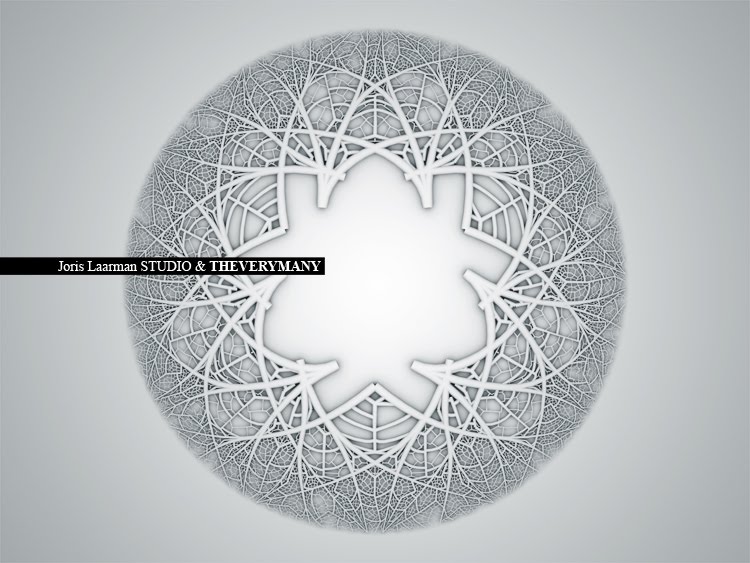from
MIT News by Scott Campbell and Ellen Hoffmane
 Photo Credit: Webb Chappell, 1997
Photo Credit: Webb Chappell, 1997
Born in 1944 and raised in rural Australia, Mitchell received a Bachelor of Architecture from the University of Melbourne, a Master of Environmental Design from Yale and a Master of Arts from Cambridge. He was a Fellow of both the Royal Australian Institute of Architects and the American Academy of Arts and Sciences, and a recipient of six honorary doctorates. In 1997 he was awarded the annual Appreciation Prize of the Architectural Institute of Japan; he also chaired the National Academies Committee on Information Technology and Creativity.
Before coming to MIT, Mitchell was the G. Ware and Edythe M. Travelstead Professor of Architecture and director of the Master in Design Studies Program at the Harvard Graduate School of Design. He also served as head of the Architecture/Urban Design Program at UCLA's Graduate School of Architecture and Urban Planning and taught at Yale, Carnegie-Mellon and Cambridge Universities.
Mitchell was a prolific author. In his most recent book,
Reinventing the Automobile, co-authored with Christopher Borroni-Bird and Lawrence Burns (MIT Press, 2010), Mitchell reimagines the automobile for the 21st century, proposing that today's cars follow the same basic design principles as the Model T: they are well suited for conveying multiple passengers over long distances at high speeds, but inefficient for providing personal mobility within cities, where most of the world's people now live.
Other publications include
World's Greatest Architect: Making, Meaning and Network Culture (2008);
Imagining: Designing a Campus for the Twenty-First Century MIT (2007);
Placing Words: Symbols, Space, and the City (2005),
Me++: The Cyborg Self and the Networked City (2003);
e-topia: Urban Life, Jim-But Not As We Know It (1999);
High Technology and Low-Income Communities, with Donald A. Schön and Bish Sanyal (1999);
City of Bits: Space, Place, and the Infobahn (1995);
Digital Design Media (1991, 1995);
The Reconfigured Eye: Visual Truth in the Post-Photographic Era (1992);
The Logic of Architecture: Design, Computation, and Cognition (1990); co author at
The Electronic Design Studio (1990); con author with J., Robin S. Liggett, and Thomas Kvan,
The Art of Computer Graphics Programming: A Structured Introduction for Architects and Designers (1987) and Computer-Aided Architectural Design (1977). [complete list:
books/
bibliography]. He also served as chair of the Editorial Board at the MIT Press since 1994 and had been a member of the publisher's Management Board since 2000.
"Bill Mitchell was a very important thinker, truly a pioneer of the future," said
Adèle Naudé Santos, current dean of the
School of Architecture and Planning. "He played an extremely important role in research at the Media Lab, and because he was such a prolific writer, the significant advances he made will be with us for all time. Our community will be much diminished by his passing."
"Bill's highly unorthodox approach to re-thinking and re-framing daunting societal problems was the essence of his brilliance," said
Frank Moss, director of the
Media Lab. "It has significantly impacted my thinking about how one changes the world for the better."
Mitchell is survived by his wife, Jane Wolfson; a daughter, Emily and son-in-law, Seth Rooder of Brooklyn Heights, NY; a son, Billy of Cambridge; his mother, Joyce of Berwick, Australia; a sister, Mary Close and brother-in-law John Close of Kallista, Australia; his previous wife, Elizabeth Asmis of Chicago; and a loving extended family.
Donations in his memory may be made to the Learning Prep School at 1507 Washington St., West Newton, MA 02465, where a technology fund will be established in his memory.
A memorial service will be held at MIT at the new Media Lab Complex, 75 Amherst Street, Cambridge, MA, on Wednesday, June 16 at 10 a.m. Private burial services will follow at Mt. Auburn Cemetery.











